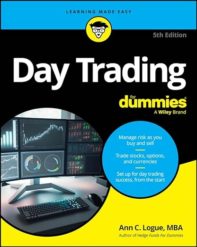 The 401(k) was originally designed as a supplement for a traditional, defined benefit pension plan. Now, few companies offer defined benefit pensions; the 401(k) is the retirement plan. Between the tax benefits and the habit of saving, 401(k) plan participation can be a huge help in getting you set up to retire. Some companies allow employees to begin participating as soon as they start working for the firm, others require them to have been employed for a certain amount of time, such as a year.
The 401(k) was originally designed as a supplement for a traditional, defined benefit pension plan. Now, few companies offer defined benefit pensions; the 401(k) is the retirement plan. Between the tax benefits and the habit of saving, 401(k) plan participation can be a huge help in getting you set up to retire. Some companies allow employees to begin participating as soon as they start working for the firm, others require them to have been employed for a certain amount of time, such as a year.
In most cases, you have to sign up for the plan when you are eligible. Your company’s HR department should send you a notice. If not, ask them when you can begin to participate. Some companies will add people to the 401(k) plan automatically unless you tell the HR department not to do it. Research has shown that this increases the number of people who participate in these plans.
The best thing to do for retirement security is to contribute the maximum amount allowed, which is currently $17,500. If you can’t do that, that’s okay. Aim to contribute enough to receive the maximum match offered by the employer. If your company matches the first $1000 that you contribute, for example, see if you can find a way to put $1000 of your own money in. Then, you get the additional $1000 – free money, and a doubling of your return on investment no matter what the financial markets do.
When choosing the contribution amount, remember that the money is excluded from taxes, so it is worth more than money in your paycheck. If you are in the 15% tax bracket and can give up $50 a paycheck, you can actually contribute $57.50 ($50 x 1.15) because of the tax savings.
If you can’t contribute enough for the full match, look at the minimum amount the plan allows you to contribute. The IRS has no minimum limit, but some employers have one. If you can contribute as little as $5 a paycheck, do that. Even a little bit of matching funds – and retirement savings – will make a huge difference over the years.
After you set up your contribution, the next choice is what fund to use. Your employer will offer some choices. If you do not have the time or energy to do the research, opt for the target date fund which, in most cases, will give you a good-enough risk and return profile. If you do want to do research on your choices, go to Morningstar.com, which is a great resource for mutual fund investors.
Each year when you get a raise, consider increasing your contribution until you have reached the maximum. For example, if you receive a 3% raise, put half of the raise (1.5% of your current pay) into your retirement account. That way, you still get to enjoy some of the benefits of the raise now while also enjoying the benefits for years to come.
Your plan may allow you to take withdrawals or loans. In general, this is a terrible idea. A 401(k) plan is supposed to be for retirement! Any withdrawals that you make for whatever reason reduce your retirement security. If the plan is a supplement to a traditional pension, that’s not much of a risk, but it if it your only retirement savings, you leave yourself in a weak position in the long term. Don’t listen to your cousin who says it’s a great way to get money for a down payment. If you are in a situation where you need money, go to the HR department and reduce your 401(k) contributions. That’s a better option than taking money out or borrowing against it.
When you leave your company for whatever reason, you will be allowed to take your retirement fund with you. That’s a huge advantage that 401(k) plans have over traditional pensions. Be sure to keep the money in a retirement account, though. If you spend it, you will pay a huge tax penalty and weaken your retirement security. Unless you are desperate for money to feed your family, keep that money in a retirement account.



401(k) plans actually do sound helpful. My mother, now in her mid 50’s wishes that she had such a plan!